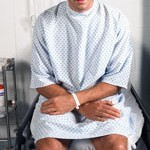Jock itch refers to a fungal infection of the skin in the groin area. The skin naturally has microorganisms such as bacteria and fungi on its surface. When the right conditions apply these bugs multiply and can cause Tinea cruris, or jock itch.
Signs and symptoms of jock itch:
Itching of the groin especially in the folds of the skin and in the anal area. A raised dry or scaly rash with sharply defined borders. The rash starts in the groin area and may spread down the inner thigh. The skin in the affected area is usually a reddish brown color or much lighter than the unaffected skin. Blisters can appear. Jock itch does not usually affect the scrotum or the penis.
How does jock itch start?
In one of two ways;
1) By setting up the conditions in which the fungus thrives, or
2) By catching it from others by wearing their clothes, using their towels or by direct body contact.
Treatment of jock itch:
The main treatment is good skin care and hygiene.
Topical antifungal ointments, creams and powders are available without prescription. These should be applied as per instruction. If the rash does not respond to self care after 2 weeks seek medical assistance. Oral anti-fungal medication or steroid creams may be required. It is possible that you have misdiagnosed your condition.
Complications of jock itch:
A permanent discoloration of the skin.
Secondary skin infections.
Prevention of jock itch:
Because this fungus likes warm, moist, sweaty groins the best prevention is to keep the area clean and dry, so:
- take regular showers or baths (daily) and dry the area well
- Apply a drying powder, antifungal powders can be used daily
- Wear loose clothes and launder them regularly. Non synthetic materials, cottons and wool are more absorbent and help keep sweat away from the skin
- Avoid rough materials that break the skin
- Do not share clothes and have your own towels and wash things so you do not catch jock itch or pass it on to others.






